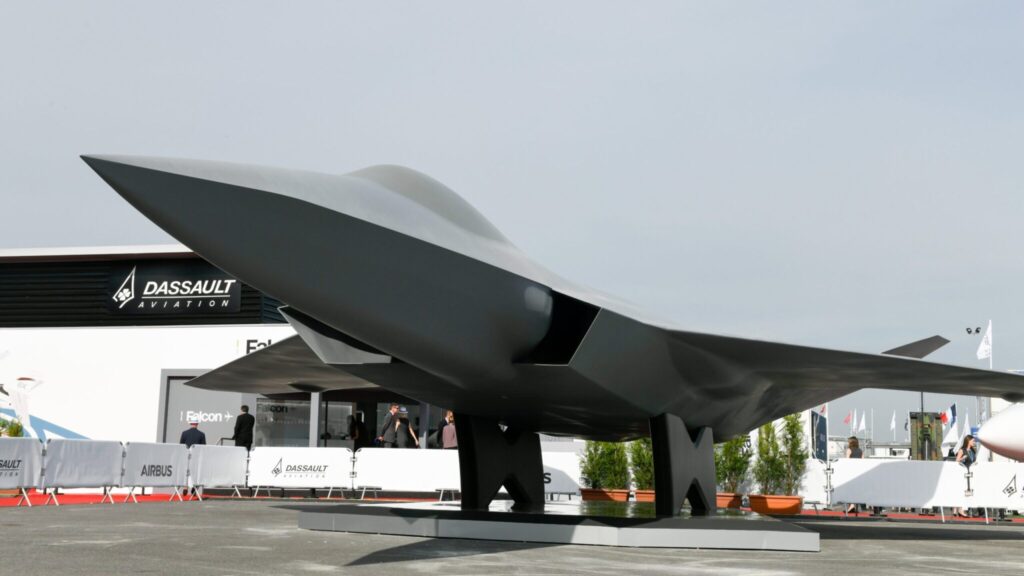
In May 2024, a unique dogfight took place. A brightly colored US F-16 named Vista soared into the sky. However, this wasn’t your typical aerial combat. This F-16 wasn’t controlled by a human pilot, but by artificial intelligence. The AI software powering the aircraft first learned by analyzing massive amounts of data in a simulated environment. Then, it put its knowledge to the test during real flights. The data gathered from these flights was fed back into the simulator, allowing the AI to learn and improve its skills even further. Hidden from view in secure simulators and shielded buildings, a new generation of test pilots is training – not humans, but AI agents – to dominate the skies in future wars.
Meanwhile in Europe, a joint effort by European nations to develop a new combat aircraft system with drones by the 2040s could be the first major military program to fully integrate artificial intelligence. The project, led by Germany, France, and Spain with Belgium observing, aims to have working prototypes flying by the end of this decade. AI will be crucial to almost every aspect of the system. The core of this network-based system, called Future Combat Air System (FCAS), will be Europe’s 6th generation fighter jet. It will work alongside other manned aircraft, drone “loyal wingmen,” and advanced command and communication systems. Traditionally, developing weapon systems takes a long time. However, the rapidly changing battlefield means NATO’s air forces need a faster, more affordable, and adaptable approach that brings together scientists, engineers, military planners, and industry. This “agile acquisition” is essential for maintaining air superiority. The key difference between FCAS and current systems is the use of loyal wingman drones. These drones will fly with the main piloted aircraft to support missions. They can gather more data, provide additional firepower, or overwhelm enemies with their numbers.
German startup, NeuralAgent, is responsible for ensuring data flows smoothly between all parts of the system. Instead of a single, cloud-based AI making decisions, each drone will use its own smaller AI model to operate independently and share information with other drones using methods like light signals, narrow band radio, or even infrared. This creates constantly changing and redundant data links for reliable communication.
In the initial stages, FCAS’s AI models will be pre-programmed and won’t learn during missions. Algorithms for processing sensor data or making attack decisions will be developed and updated offline. However, future plans might involve integrating machine learning directly onto the aircraft.
Our analysis shows that quickly gathering data, analyzing it for crucial information, and distributing it quickly for important choices creates a significant advantage. To achieve this and dominate the information age, NATO’s air forces need to develop capabilities in several areas. This includes turning data from various sources into usable information for both tactical and operational levels, potentially using machine-to-machine processes to assist humans in decision-making. Additionally, they need to consider how to build the necessary systems to connect all these capabilities and use big data analysis effectively. Balancing factors like range, payload capacity, survivability, firepower, affordability, and maintainability will also be crucial. Fighter jets with the ability to penetrate enemy defenses will play a dual role: targeting enemies and acting as data nodes within the network using their advanced sensors.
To keep up with rapid technological advancements, NATO air forces need to adopt new acquisition methods that allow for quicker development, testing, and integration of these technologies into weapon systems. This might involve funding the development of subsystems and components outside of the main program until they are technically mature and integration challenges are understood. This will allow for a step-by-step approach to achieving future capabilities and deliver them to the military faster.
Gaining and maintaining air superiority to support joint military operations in the 2030s and beyond requires a new approach. This approach emphasizes strategic flexibility through experimentation, rapid prototyping, and agile acquisition strategies. If successful, this will give future commanders a wider range of options by deploying this integrated and networked system within the military structure.
